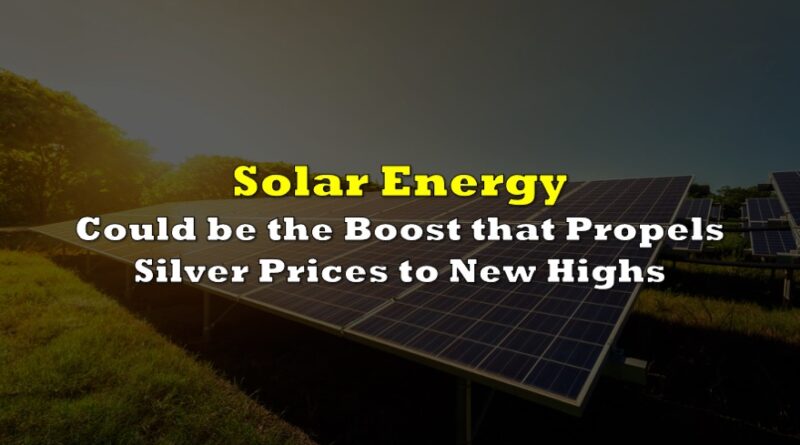Despite the economic turmoil currently plaguing many businesses and households across Canada, Prime Minister Justin Trudeau announced that Canada will still continue to trudge ahead with its 2030 emission targets, and pledge billions of dollars towards combatting climate change. The latest plan, called “A Healthy Environment and a Healthy Economy,” is the federal government’s effort to regain momentum in Canada’s climate change agenda, as well as align the country’s environmental policies with upcoming pledges made by US president-elect Joe Biden.
Indeed, the reignited climate change and emission reduction goals will push Canada towards a green transformation, and coupled with a Biden presidency that has already pledged to support solar energy investments and zero-emission transportation, the demand for renewable energy will only continue to grow. As a result, some of the inputs that are needed for applications related to green energy will also see their demand multiply, including silver – which up until now, has been significantly undervalued relative to gold.
According to a recent report by Saxo Bank, the demand for silver will soon outstrip its supply, as the number of applications for the commodity continue to grow amid increasing green initiatives. Solar panel production in particular will create a significant push for silver, given that the metal has the lowest electrical resistance relative to all other metals in standard temperatures. In fact, other substitute metals are unable to match silver in energy output, lifespan duration, and reliability when it comes to the commercial development of solar panels.
As more and more countries continue to adapt climate conscious policies, the production of solar panels is expected to rise by more than 50% by 2025. This would certainly uphold the strengthening demand for silver, especially as economies continue to recover from the pandemic. In fact, analysts foresee an increasing number of governments including some form of funding for green initiatives in their emergency stimulus plans, such as Canada for example. This will further push the industrial portion of their economies towards innovations that use the precious metal as an input.
On the supply side though, the coronavirus pandemic has punished silver mine output. Global production is expected to drop by 6.3% to approximately 780.1 million ounces this year, largely due to mine shutdowns in wake of infection fears. However, even prior to the pandemic though, mine output was already beginning to slide, as production declined by 1.3% in 2019. In the long run, Saxo Bank notes that over half of mined silver supply has thus far been a by-product of zinc, copper, and lead mining, thus making it difficult for miners to satisfy the surplus proportional demand for silver.
Although silver has historically been significantly more volatile than gold, the solar panel industry will likely steady the overall demand for the precious metal in the industry setting. Taking into consideration the bigger picture, silver does tend to coincide with gold fluctuations over time. Albeit currently the silver-gold metal ratio of over 76-to-1 suggests otherwise, historical data points out that the gap between the two metals will eventually close.
However, taking the current economic conditions and unprecedented monetary policy in response to the pandemic into consideration, a continued bull run is likely on the horizon. This means that silver will probably fluctuate in the same direction, coupled with a boost from rising industrial demand.
Information for this briefing was found via Saxo Bank and the Silver Institute. The author has no securities or affiliations related to this organization. Not a recommendation to buy or sell. Always do additional research and consult a professional before purchasing a security. The author holds no licenses.

